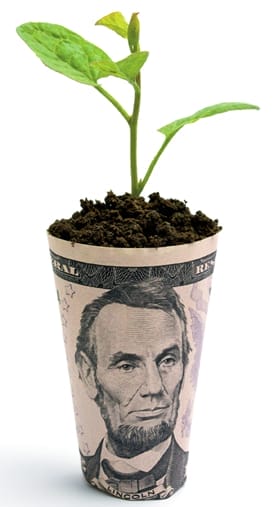The sustainability movement at Wharton started small, six years ago, with the installation of the School’s first three-bin recycling cans.
Today, the Wharton Sustainability Program is a serious School-wide commitment, extending from the Dean’s Office all the way down to the new Student Sustainability Advisory Board and highly focused departmental Green Teams. The program, part of the wider Penn Green Campus Partnership, uses a framework from LEED—The Leadership in Energy and Environmental Design Green Building Rating System, developed by the U.S. Green Building Council (USGBC)—to identify improvements in energy efficiency, green cleaning and waste reduction.
“We are successful because we engaged our community,” says Maria O’Callaghan, Director of Wharton Operations, which oversees the program. “As recycling became second nature among our population we were able to expand our efforts. Sustainability is a shared responsibility and we have found that people want to do the right thing.”
Peter Degnan, Senior Associate Dean for Finance and Administration, says he became an enthusiastic backer of the program when he realized how much there was to be gained.
“Even though it’s the hot topic of the moment, Wharton has been in the sustainability business for a long time,” he says. “At the same time, we recognize there is more that we can be doing to save resources and money for the School.”
He cites one common-sense, energy-saving change as emblematic of the Wharton program: Recently, the School decided to turn off the Huntsman escalators from 11:30 p.m. to 6:30 a.m. every day. Although the building is open 24 hours, elevators and stairs can easily move the lower traffic volume during the night hours. “Why would we waste energy when the escalators are being so little used?” asks Degnan. “It’s a simple thing to do.”
One of the program’s other successful changes—setting public printers to default to double-sided printing—wasn’t quite as easy. Making the switch required broad community buy-in and a change in culture.
“We had to be sure that faculty would accept double-sided papers,” says Emily Schiller, Associate Director of the program. Faculty obliged, and the results have been tremendous. Since the change, Wharton has saved 2.4 million sheets of paper.
Schiller, C’02, WG’09, who majored in Environmental and Risk Management and was a leader of the Wharton Social Impact Conference, began working with Wharton on sustainability as a student. After graduation, she stayed on when the newly created position—the first full-time sustainability associate at a Penn school—beckoned.
She’s since found no shortage of ideas. Staff, faculty and students—including a Student Sustainability Advisory Board launched in December 2009—all make suggestions for improvements, and every project is then analyzed based on financial and environmental ROI. In the past year, the program has saved Wharton about $114,000, more than paying for itself.
The Wharton Sustainability Program keeps projects under review on its website—another first for any school at Penn, and a major contributing factor to the program’s success, because transparency is an important part of the review process.
“One message is that we’re approaching this the same way we hope corporations do,” Schiller says. “We know we’re not necessarily the leaders in being green, but that’s OK. This is where we’re starting from, and we’re being transparent about the opportunities and how we’re dealing with them.”
Another early advocate of the program, Eric Orts, Guardsmark Professor and Director of Wharton’s Initiative for Global Environmental Leadership, explains: “The plain truth is that ‘business as usual’ will result in one or more major environmental catastrophes for humanity and the planet in the relatively near future (and some are already happening). Many businesses and business schools ‘get it’—and are beginning to change. As an academic leader, Wharton should be ahead of the curve.”

























